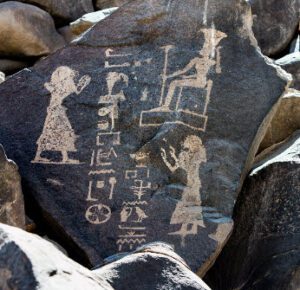Sehel Island Granite Quarry
The large Sehel Island is situated just North of the Old Aswan Dam, where the Nile would rush noisily through the granite boulders that emerged from the riverbed just south of here, forming the First Cataract.
The hills have over two hundred and fifty inscriptions, dating from the Middle Kingdom until Ptolemaic times (2061-305 BC), mostly recording expeditions beyond the First Cataract or prayers of gratitude for their safe return.
In the Ancient Times, travellers on their way to Nubia or those returning from an expedition to the South, would make a pilgrimage to the Sacred Island of Sehel and leave inscriptions recording their appeals or prayers of gratitude for the help in safely negotiating the Hazardous First Nile Cataract.
Several of them record events and journeys into Nubia by officials on the king’s business. The inscriptions are carved or bruised onto the jumbled mounds of granite boulders which are strewn over several areas of the island.
The most important inscription located atop the eastern hill is a Ptolemaic Famine Stele dating back to the reign of Zoser (2687-2668 BC) and relates how Zoser ended a seven-year famine during the 3rd Dynasty by honouring Khnum, the God of the Cataract, with a new temple on Sehel and returning the land confiscated from his cult centre at Esna near Luxor, which the people believed had provoked Khnum to withhold the inundation.
As you climb the hill to the top there is a spectacular view over the cataract area to the south.
In addition to this, there is an interesting active granite quarry, still working using the same ancient and primitive cutting tools and techniques as the Ancient Egyptians founded.
The trip by boat to Sehel Island makes a pleasant morning or afternoon excursion. The island people are friendly and hospitable offering cups of tea in their Nubian homes. The local ladies will follow you everywhere, keen to show off their baskets of hand-made crafts, carved dolls and beaded jewellery.

